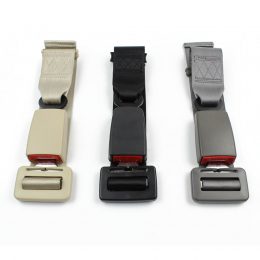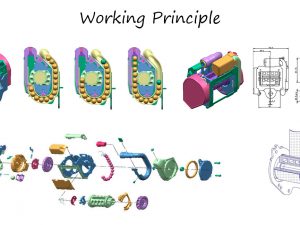Flying while overweight can be uncomfortable, not just for the plus-size passenger but sometimes also for seatmates and aircraft crew who might need to reinforce certain rules and safety procedures.
As a frequent traveler and someone who’s been both heavier and lighter than I am today, I have experienced flying at different weights and sizes. I know from firsthand experience how just 20 or 30 pounds can make a difference in comfort on an aircraft. And I’ve seen how the attitudes — and patience — of the people around you differ depending on your weight.
And, sometimes, it may just feel like you’re being singled out because of your size. Last week, three Auckland women of size were denied boarding when staff from Thai Airways explained they were too large to sit in the business-class seats they’d booked.
While I’m sure that was a painful and embarrassing experience, the airline was not singling them out. On this particular aircraft (likely Thai’s 787-9), the business-class seats the family purchased were equipped with seat belts that have airbags. This type of restraint cannot be used by anyone with a waist over 56 inches.
It’s incredibly unfortunate this information wasn’t clearly communicated in advance to the passengers but, once at the airport, the airline could not break this safety rule. The women could fly in economy because the seats did not include airbags, and so the airline could provide seat belt extenders to ensure safe travel for their passengers.
A rule like this can blindside someone when they least expect it. According to the Behavioral Risk Factor Surveillance System study, “Adult obesity rates now exceed 35% in nine [U.S.] states, 30% in 31 states and 25% in 48 states.” So, we’ll likely hear more about these types of issues in the future.
That’s why any passenger of size, like me, has to do more research and due diligence when booking travel.
Over the years, I’ve accumulated some handy tips that ensure my flight will be comfortable and that my seatmate won’t have an issue sharing space with me. You can read a flight attendant’s advice for passenger of size here, but here’s what you need to know, as well as my tips from an actual passenger of size.
What to know as a passenger of size
When it comes to air travel, the term “passenger of size” is used for anyone who’s overweight or too large to potentially occupy one seat on an aircraft. Many airlines have rules that require a larger passenger to pay for a second seat if he or she can’t comfortably fit in one seat with or without a seat belt extender. Contact your airline for the most up-to-date rules.
Generally speaking, the armrests must be lowered and you need to fit in that space without encroaching significantly — usually 1 inch or more — on the person or people sitting next to you. Fair enough. At my current weight, I don’t encroach on anyone else’s space, but it can be a tight squeeze and a bit uncomfortable sometimes with the armrests lowered.
Tips for traveling as a passenger of size
Be aware of aircraft type and seat width
I need to be more aware of the seats themselves on the particular aircraft I fly. I need to know exactly which seats I fit comfortably into and whether or not I may need a seat belt extender.
FEA046 Adjustable Car Safety Belt Extenders |
 FEA044A Car Safety Belt Extender |
 FEA043 High Quality Adjustable Safety Belt Extender |



 Static Seat Belt
Static Seat Belt Universal 2-Point Seat Belt
Universal 2-Point Seat Belt Universal 3-Point Seat Belt
Universal 3-Point Seat Belt Baby Seat Fittings / Holder
Baby Seat Fittings / Holder Seat Belt Extender
Seat Belt Extender Wheelchair Seatbelt
Wheelchair Seatbelt Racing Seat Belt
Racing Seat Belt Seat Belt Tongues/Buckles
Seat Belt Tongues/Buckles Anchorage Rings
Anchorage Rings Anchorage Plate
Anchorage Plate Seat Belt Adjuster
Seat Belt Adjuster